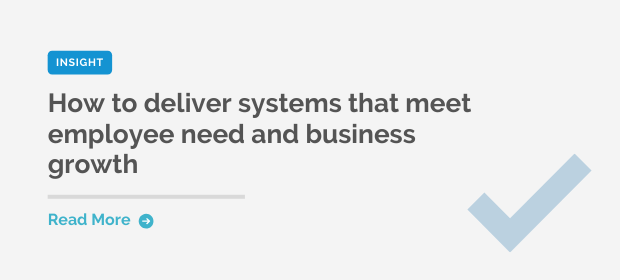Most businesses were experiencing difficulties with inefficient systems years or even decades ago – and most still are today.
Technological progress is commercial progress and as new technologies come to market and businesses and their customers evolve, outdated, inflexible software platforms can significantly impact business growth and performance across departments and functions.
It’s estimated that 90% of businesses are held back in terms of growth and enhanced efficiency due to old technology, with 31% of an organisation’s technology being legacy and an average of 60-80% of IT budgets allocated to keep them running. This is compounded by demotivated employees, impaired productivity, increased security risks and a limit to innovation, to name a few.
As painful as these systems can be, it is often daunting to replace them. Questions arise, pertaining to downtime minimisation's, how to execute improvements without losing data, cost, risk of failure or system breakdown, appropriate resourcing and the general scale and complexity of an upgrade project.
However, digital projects do not require a root and branch restructuring of your technology infrastructure that causes widespread implications and business interruptions. Instead these projects should be perceived as a constant, measured approach to technological improvement.
Here, we explore the warning signs that operational activities are being negatively impacted by outdated systems, and help you understand which areas of the business could be vulnerable and may require change.
1. Your Business Has Changed
Half of senior leaders state that legacy systems are the main barrier to digital transformation, blocking their organisation’s commercial progress. If your business has ambitions for growth or has undergone change, even slightly, chances are your systems, or parts of them, will no longer be able to effectively support your business processes and workflows. Mission critical systems should be robust and flexible enough to adapt to change and support future roadmaps, otherwise present a costly obstacle to growth.
2. Your Staff are Avoiding Existing Systems and Using Workarounds
Workarounds result in disjointed processes, major inefficiencies and increased risk of manual error. According to a survey conducted by IFS, 75% of respondents under 35, and over half of respondents aged 36 to 45, turn to Excel spreadsheets to get their work done when an enterprise solution is too difficult to use. This, alongside direct or indirect negative employee feedback can indicate that your systems are no longer fit-for-purpose.
Multiple disconnected systems increase the chance of manual error, reduce efficiencies and make it difficult to gain accurate real-time information. Systems that are not functional or aligned with evolving business processes can result in significant loses in productivity.
3. Your Teams Don't Have Mobile Capabilities
A lack of onsite technology can result in processes not being followed correctly, greater risk and error and a lack of collaboration – a key to improving productivity.
With a lack of connectivity and accessibility of information across the business, you’re at risk of inefficiencies which in turn hamper productivity and growth.
Integrating technology with onsite processes, such as rugged devices for use on a construction site, can create an agile and adaptable workforce that has continuous access to task critical data. By enhancing your team’s mobile capabilities, you will enable greater real-time visibility, reporting, collaboration and predictive decision making, making it seamless to access information, check and track products and connect suppliers, employees and customers.
4. Business Reporting is Slow and Inaccurate
Real-time business intelligence reporting is invaluable to business leaders when it comes to making business-critical, strategic informed decisions. 69% of decision makers believe analytics will be crucial for business success in 2020.
If it takes you three days to get a report and your business data is not accurate or reliable then this can become a significant barrier to the growth of your business. As well as this, if each system your business uses is siloed, you’ll struggle to access the data you need efficiently, impacting the decisions you make.
Implementing and using data analytics offers significant benefits, such as avoiding unplanned downtime, improving supply chain performance and reducing wasted resources. All of which are essential for competitive advantage.
5. System Performance is Poor and Costly
Well designed, fit-for-purpose software should be highly performant and scalable. When system performance becomes poor and maintenance costs incline, your system can become a barrier to growth. Especially when software can’t keep pace with an organisation’s plans for innovation and change.
Legacy systems are very costly for a business to maintain. This, alongside a lack of speed, multiple glitches and issues around updates and fixes can create greater intangible costs. This can be particularly challenging if you have incompatibility issues with newer software, for example in introducing a new CRM/ERP system. This can prevent businesses from efficiently running business processes and result in an inability to scale and remain competitive.
There are many variables when considering changes to your existing systems and processes. To help you think through some of these challenges, we have created a simple business and systems diagnostic tool covering the areas detailed above.




